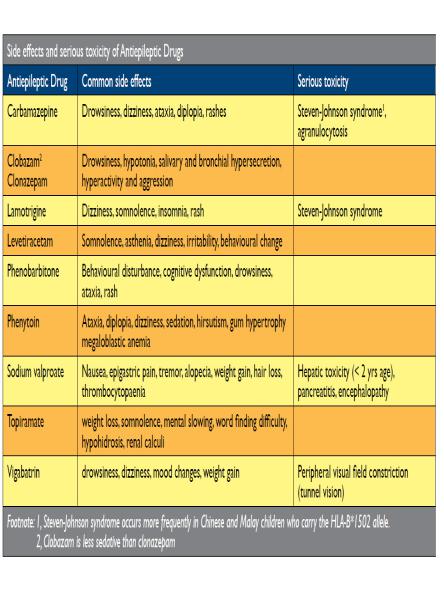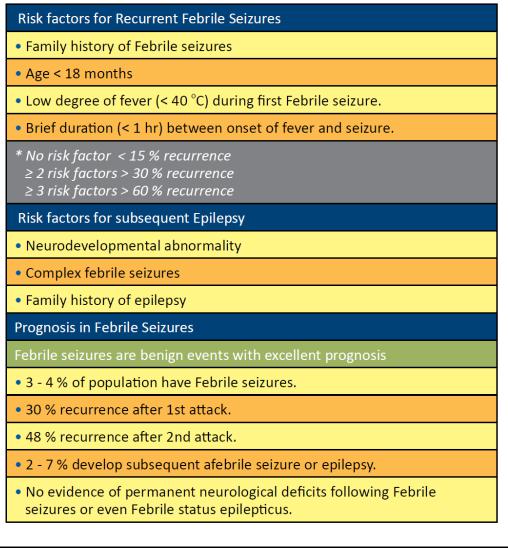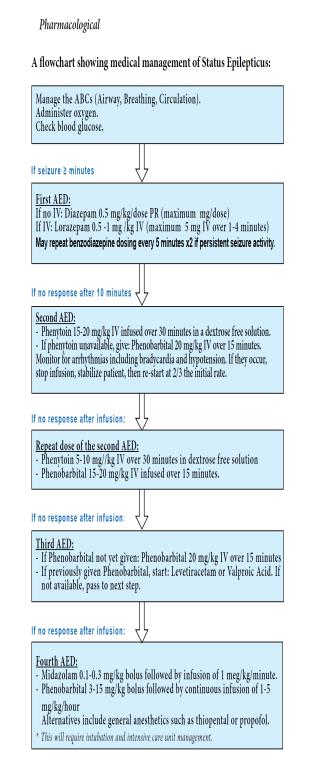
Pediatrics(2)
.pdf-Pharmacological treatment
-• Children <1 month of age
-→ Refer to neonatology protocols for management of convulsions
-• Children >1 month of age
-→ Monotherapy is preferred but combination therapy
-may be necessary. Combination therapy should be initiated by or in close consultation with a pediatric
-specialist or neurologist. drug levels are rarely
-indicated unless there is concern about toxicity or compliance
-→ For acute generalized tonic clonic seizures
-■ Diazepam rectal 0.5 mg/kg once OR IV 0.2-0.3mg/kg once
-May be repeated every 5 minutes for a total of 3 doses, monitor airway and breathing closely with repeat dosing
-■ Alternative Medication (in the absence of diazepam)
-o Lorazepam IV 0.05- 0.1 mg/kg once, may be repeated in 5 minutes for a total of 3 doses
-Or
-o clonazepam IV 0.1 -0.15 mg/kg loading dose by slow IV injection
-→ For refractory status epilepticus
-■ Midazolam IV 0.1-0.3 mg/kg bolus followed by a continuous infusion starting at 1 ug/kg/minute.
-The infusion can be titrated upwards every 5 minutes as needed.
-→ If persistent seizure activity after benzodiazepines
-■ Phenobarbital 15 mg/kg IV or by NG tube
-loading dose over 15minutes, may use a dextrose containing solution. If no response after 30
-minutes, may repeat a 7.5 -10 mg/kg IV loading dose.
-Or
-■ Phenytoin 15-20 mg/kg IV infused over 30 minutes in a dextrose-free solution
-→ If seizures persist after loading dose of either Phenobarbital or Phenytoin
-■ Please consult a specialist physician regarding combination therapy and referral for specialized care. Phenytoin and Phenobarbital may be used together but vital signs must be monitored closely and patient should be referred as soon as possible.

-■ Monitor for bradycardia, arrhythmias, and hypotension and pause the infusion if these signs occur and restart at 2/3 of the initial loading dose.
-

-
-Recommendations
-The following conditions require referral for specialized services:
-- All cases of suspected infantile spasms or myoclonic seizures.
-- If there is concern for a secondary cause of epilepsy requiring
-further evaluation (examples include brain tumors, tuberous
-sclerosis, brain abscess, cysticercosis, etc.). This is particularly
-true in partial seizures where there may be a focal neurological problem.
-- Seizures that are not controlled with first-line medication within 1 month.
-- Seizures associated with neuro-regression.

- - Mixed seizure types within one patient.
-
- Definition
2 @ 3 6 y , p y.
q fi-4% < 5 y xp @ .
-
- Management
N p . T :- T x p y p y . F @ .
T/ p .
T y p x y, p y y y p . I
T , , p , y ,X-y, , p .
p
Must be done if:
-A y . -P py.
-P y y 3 6 Q @ . 2trongly recommended if
-A < 12 .
-F p x @ .
-I p p .
-P y . 2 y y y.
EEG p p x @ .
P C
A x
U py . . y p P 15 /k 6 y p ’ , y @ . P First Aid Measures during a Seizure. R D @ p
P k @ pp R D @ p ( : 0.5 /k ). T y @ 5 .
P recurrent @ .
-A p @ :
T k p N p p p y. F @ x
deficit nor any effect on intelligence.

-
-7.1.1. Convulsive Status Epilepticus
-Definition: Status epilepticus is a convulsion that persists for > 30
-minutes or is repeated frequently enough to prevent recovery of consciousness and return to baseline between attacks.
-Causes
-- Epilepsy syndromes may be present first as status epilepticus or status epilepticus may occur with inadequate anti-epileptic drug levels
-- CNS infection
-- Hypoxic ischemic insult
-- Traumatic brain injury
-- Cerebrovascular accidents
-- Metabolic disease including severe hypoglycemia and inborn errors of metabolism
-- Electrolyte imbalance
-- Intoxication
-- Cancer including primary brain tumors and metastatic disease
-Signs and Symptoms
-- Seizure lasting > 30 minutes or repetitive seizure activity without return to baseline consciousness.
-Complications
-- death
-- Neurologic morbidity including persistent seizures or Encephalopathy
-- Respiratory depression or failure due to neurologic status or aspiration
-- Blood Pressure disturbances including severe hypotension or severe hypertension
-- Hyperthermia
-- Metabolic derangement including hypoglycemia, alterations in sodium, and acidosis
-- Rhabdomyolysis
-- Renal failure
-Investigations
-- Laboratory evaluation for underlying cause may include blood glucose, electrolytes, NFS, arterial blood gas, toxicology screen,
-and anticonvulsant drug levels if indicated.
-- If there is no contraindication, a lumbar puncture should be performed to exclude infectious etiology.
-- EEG
-- CT scan of the brain
-- MRI of the brain
-Management
-Non-pharmaceutical Acute Management
-• Manage Airway-Breathing-Circulation-disability and continue to monitor throughout seizures
-• Place patient on side at 20 – 30° head up to prevent aspiration
-• Monitor heart rate, respiratory rate, Blood Pressure, oxygen
-saturation (SaO2), neurological status, fluid balance
-• Monitor laboratory values including blood glucose, electrolytes, blood gases, toxicology screen and if indicated anticonvulsant blood levels
-• Control fever with tepid sponging
-• Administer oxygen to maintain SaO2 of ≥ 95%
-• If unable to protect airway or poor ventilation, consider use of an oral airway, bag-mask ventilation and/or intubation
-• Admission to Intensive Care Unit if possible

-
-While following medication flow chart above, it is important
-to continue to address and manage the following:
-→ ABCs
-→ Hypoxia: Administer oxygen, oral airway, bag-mask
-ventilation or intubation.
-→ Hemodynamic: Assess for shock or hypertension and
-manage accordingly.
-→ Hyperthermia: Treat with Paracetamol 10-15 mg/kg
-orally or rectally every 4-6 hours as required.
-→ Hypoglycemia: Treat with IV dextrose solution.
-→ Hyponatremia: Assess etiology and manage
-accordingly.
-→ If cerebral edema and normal renal function,
-consider Mannitol IV 0.5-1 gram/kg administered
-over 30–60 minutes.
-→ If there is a known space-occupying lesion, consider
-Dexamethasone IV 1-2 mg/kg IV as a single dose
-then 1-1.5 mg/kg/day divided into 4 doses.
-Recommendations
-- Once status epilepticus is resolved, consider maintenance
-therapy with an appropriate anti-epileptic drug depending on the etiology of seizure.
-- Referral to a specialist is always appropriate in the case of status epilepticus. If possible, control seizures and stabilize the patient before referral. If status epilepticus has resolved, further work-up
-by a neurologist may be indicated.
-7.2. Cerebral Palsy
-Definition: Cerebral palsy is a group of non-progressive clinical
-syndromes due to brain abnormalities from a variety of causes that is
-characterized by motor and postural dysfunction of varying severity.
-Though it is not progressive, the appearance of the brain lesions and the clinical manifestations may change over time as the brain matures.
-Causes
- - The etiology of the disorder is unknown in 70% of cases
-- Congenital infections (TORCH)
-- Obstetric complications (toxemia, placenta previa, abruptio placentae, etc.)
-- Teratogenic substances
